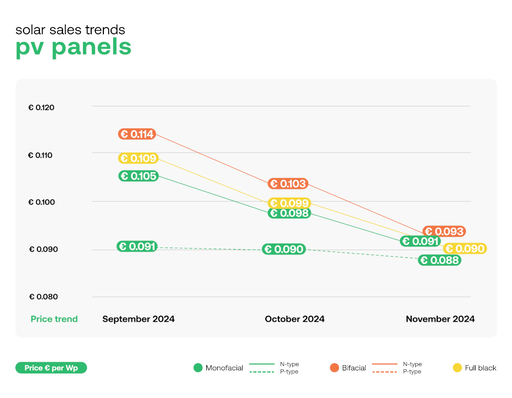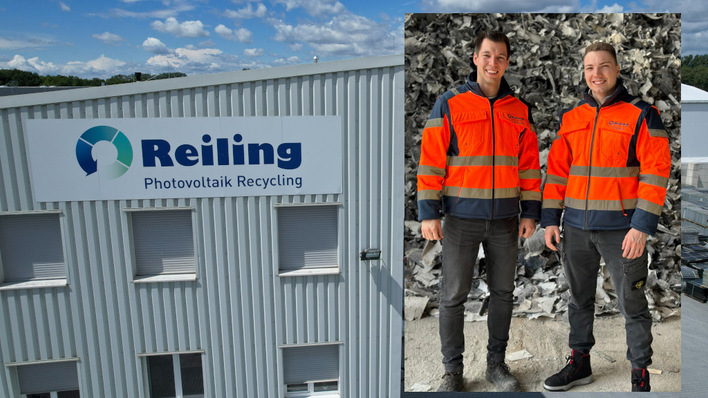Ambitious global climate goals are boosting the strong renewables trend, and energy companies are looking for new ways to tap into the potential of solar and wind power and still deliver reliable, affordable and safe power. So far, the intermittency of renewables has presented an obstacle to their everyday energy use (also known as baseload). With the advent of utility-scale energy storage solutions and hybrid energy systems, a sophisticated management system is needed to manage and balance renewables, energy storage and traditional thermal generation, minimising fossil fuels and maximising renewables.
Balancing loads - optimize energy use
So energy producers are turning to system integrators to combine multiple generation assets, balance loads and optimise the energy produced. Traditional power plants are increasingly replaced by energy systems combining multiple energy production methods and assets, integrated and governed with an advanced energy management system. Wärtsilä strides into a new era of hybrid energy in Hungary and the Azores with its industry-leading GEMS software, enabling new revenue streams for one customer and reducing fossil fuel use for another.
Hybrid systems can use renewables as baseload energy, engines – running on, for instance, biogas – as load balancing power and energy storage to smoothly manage the load adjustments. This new way of producing energy calls for a new way of thinking: instead of mere equipment providers, energy companies need system integrators, who are capable of not only combining multiple generation assets but optimising them in relation to each other. In addition to analysing and balancing loads, an integrator can bring in additional data streams such as load forecasts and weather data, as well as the ability to run multiple applications. The end result needs to be more than merely the sum of its parts.
“As an energy systems integrator, Wärtsilä combines multiple assets into a flexible and reliable solution that can be dynamically adjusted according to the demands of the market. This is part of our Smart Energy Vision: we use advanced technologies to combine renewables, engines and storage into flexible, reliable energy solutions,” says Markus Ehrström, Business Development Manager, Wärtsilä.
Engine plus storage hybrid installation delivered
In Budapest, Hungary, Wärtsilä optimised an existing engine power plant with energy storage in August 2018. This deployment between Wärtsilä and ALTEO Group leverages energy storage and the GEMS energy management system, developed by Greensmith Energy, a Wärtsilä company, to open new opportunities in the Hungarian energy market. With the energy storage installation, Sinergy Kft, a subsidiary of ALTEO Group, can now participate in the electricity market by providing frequency and secondary regulation to the national grid operating in virtual power plant mode.
In a virtual power plant several generating assets, energy storage units and power consumers are linked and operated by a single, centralized control system, enabling the power and flexibility of the aggregated assets to be traded collectively. Ancillary services are a proven application provided by GEMS and will generate new revenue streams for ALTEO.
“Hybrid energy solutions are certainly going to become more prevalent in the industry. The price of renewable energy will decrease, and energy storage will be cheaper as well. We expect to see radical changes in plant configurations as renewables become the baseload and engines together with energy storage take care of balancing it. This is the future of power generation – but it’s already here today,” says Ehrström.
Graciosa hybrid system predicts weather and adjusts output accordingly
Greensmith Energy, a Wärtsilä company, delivered an integrated energy management system to Graciosa Hybrid Renewable Power Plant in the Azores. The island of Graciosa is located in the northern part of the Azores, an island group in the Atlantic. Island grids have typically been based on fossil fuels, which can, however, be logistically challenging to come by and consequently expensive. The need for renewables supported by grid optimisation software is therefore heightened compared to large land masses, as is the value of energy storage solutions. This project represents the island’s journey to a 100% renewable energy future with an integrated power system combining renewables, engines and energy storage that will deliver both economic and environmental benefits.
The GEMS library of operation algorithms is unrivalled and enables Greensmith to solve some of the most complex energy storage challenges. Greensmith was able to integrate and optimise multiple generation assets (diesel engines, solar, wind and storage) with multiple data streams such as weather and load forecasts, helping the island to reduce its reliance on imported fossil fuels and significantly reducing greenhouse gas (GHG) emissions.
“The system and technology installed in Graciosa is perhaps the most advanced in the world as it integrates all of the assets on the island. GEMS software uses a microgrid form of AI and big data to control and balance wind, solar and diesel generation based on load patterns and weather forecasts. This level of grid optimisation has never been accomplished before and the immediate benefits include increasing the use of renewable generation, decreasing the cost of diesel generation and improving the reliability of the island’s entire electrical system,” says John Jung, CEO of Greensmith Energy.
What’s next - combine data streams
So what does the future hold? Solar and wind are rapidly increasing in the world’s energy generation mix. And, the importance of software controls and optimisation to maximise the performance and longevity of hybrid energy will become even more critical. Defining the ways in which the world’s grids operate calls for the ability to combine data streams, compute the increasingly complex interactions of different assets and adapt to changing conditions.
“The electricity grid needs to become a computer network. The transition of the energy industry is really about the start of a golden age of computer technology, which maximises the efficiency of our assets. Graciosa is a great example, but it is also scalable. Imagine a similar system in continental Australia, and you can see the potential of these solutions,” John Jung concludes. (HCN)
Stay informed, get our free newsletter twice a week. Register here
More useful information:







